The numbers are those of a real one Revolution: 1,000 km of autonomy on a single charge, less than 1,750 kg of weight and record aerodynamics, with a Cx of 0.17. Folly? For Mercedes-Benz, no: the Casa della Stella presented its world premiere at the CES 2022 di Las Vegas the brand new Mercedes Vision EQXX. It is a Concept Car, a prototype that will hardly see the road. Never like this time, however, Mercedes shows in its prototype real and reachable credentials, which show the future of electric mobility when this is already considered, in its present form, the future. For Mercedes, however, which recently launched the already revolutionary EQS and EQE, the road is still long, and this Mercedes Vision EQXX shows the future of electric mobility of the Star, a preview of future models.
A concept that goes back to its origins: Mercedes Vision EQXX is not just aesthetics, but above all technology
The most skeptical of electric mobility often say: we need to go back to basics, focus on low weight and maximum efficiency, and not on huge batteries and very powerful recharges. Even the manufacturers know this very well, but at the moment they have to make the most of the technology of batteries, charging systems and materials available in large series. Many, however, are experimenting, launching themselves on new and very interesting projects, which revolutionize a bit what we take for granted about an electric car. And this is the case with the new one Mercedes Vision EQXX. A car that will probably remain only a prototype, but that approaches the world of electric mobility in a way different.
Mercedes has created a concept car as it was used decades ago, where it was not just the aesthetics that was the master, but above all the technology put in place. For the Star House, Vision EQXX is one preview of what the new Mercedes will soon become: the most advanced, cutting-edge and desirable electric cars in the world. And with the Vision EQXX, Mercedes had the opportunity to work without pressure and without rules. For the first time in a long time, the Mercedes-Benz has had the opportunity to to experiment, starting from a white sheet, to obtain the most efficient car in the history of the House.
Technicians and technologies from Formula 1 and Formula E, who have exploited their know-how to achieve maximum efficiency. To do this, however, the largest possible battery was not used, but working on… everything else: battery density, aerodynamics, less friction, energy management software and lightness, obtained through new, more sustainable and lighter materials.
The revolution, starting with Formula E and Formula 1: Mercedes Vision EQXX uses revolutionary materials, unique and recyclable materials
The lines of the Mercedes Vision EQXX thus become only… in outline. Mind you, the wedge line, the sinuosity of the front and rear and the truncated tail are of sure impact, and will influence the new electric Mercedes of the future. But aesthetics are not the real focus, but the technology, in all its forms. These futuristic and extreme lines, obtained even with very thin roadways, even narrower than a Mercedes CLA, make it clear that the project was approached in a totally different way than usual, and the numbers seem to agree with the Mercedes men. Indeed, the Mercedes Vision EQXX is the most aerodynamic car ever, with a aerodynamic penetration coefficient of only 0.17, much lower than the Mercedes EQS, which with its Cx of 0.20 is the most aerodynamic production car ever.
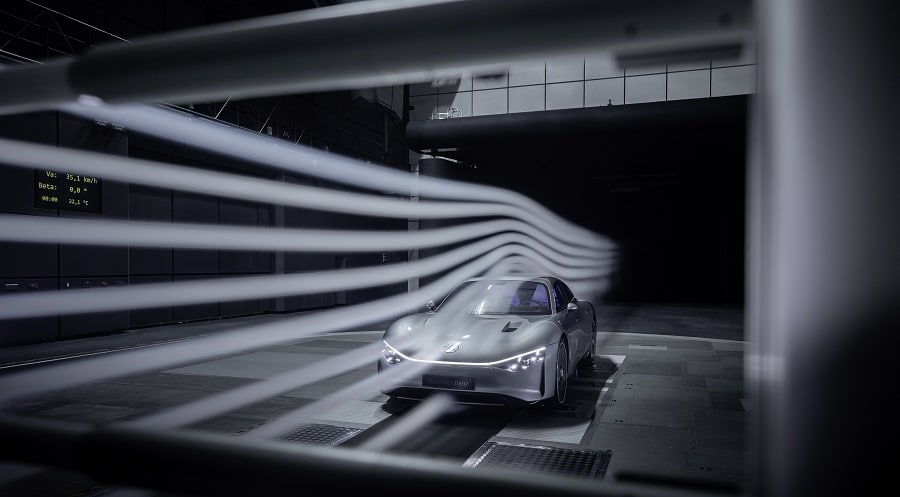
But it’s not just with aerodynamics that you get crazy results. The battery, in fact, is “small”, with a gross capacity of less than 100 kWh. Despite the fact that they are therefore about 15% smaller than the batteries used on Mercedes EQS, compared to the current German flagship the Vision EQXX batteries are over 50% smaller, and 30% less weight. On the scale, batteries, 900 V electrical system and control electronics weigh only 495 kg. A record. There platform, of the rest, anticipate the future MMA, used on the new 100% electric Mercedes, and uses for its own construction light and original materials such as Bioneqxx aluminum, the MS1500 aluminum bodywork and doors made of Cfrp and Gfrp (polymers reinforced with carbon fiber and glass fiber respectively).
But that is not all. A lot of components were produced with one 3D printing, the tires are 20 ″ Bridgestone low resistance, the rims are made of magnesium, and the brake discs are also made of aluminum, to reduce particulate matter emissions by 90%. From Formula 1 and Formula E then come the active air vents, the movable rear diffuser, while on the roof we find ben 117 solar panels with dedicated lithium batteries, capable by themselves of giving the car 25 km of extra autonomy for each recharge.
Efficiency beats power: 204 hp, “small” battery, 1,750 kg and more than 1,000 km of range
For once, therefore, we focused on achieving autonomy not with huge batteries, but with a ‘record efficiency. And indeed, Mercedes has stated that it has succeeded in overcome with its Vision EQXX the fateful 10 kWh per 100 km, thus obtaining a consumption of over 10 km per kWh. A crazy result, considering that the already efficient EQS stops at just over 6 km / kWh. To be clear, is a technological result comparable to a car capable of doing 100 km with a liter, like the famous Volkswagen XL1. Doing a quick mathematical calculation, we obtain how by traveling 100 km for every 10 kWh consumed, the approximately 100 kWh of the battery would allow aautonomy of over 1,000 km. A result never seen before on an electric, also achieved thanks to a very low weight for its dimensions, of only 1,750 kg.

It’s about a mass of more than 750 kg lower than the EQS, which reaches 2,510 kg empty. This result was also achieved thanks to a mechanics that do not aim for maximum performance. Here too, the Mercedes Vision EQXX goes completely against the tide. If the electric currently in circulation easily exceed 500 HP and use two or more motors, Mercedes Vision EQXX only needs one 204 HP rear electric motor. A power that may seem reduced, but Mercedes is keen to point out that well 95% of this power actually reaches the wheels, for a truly exceptional performance.
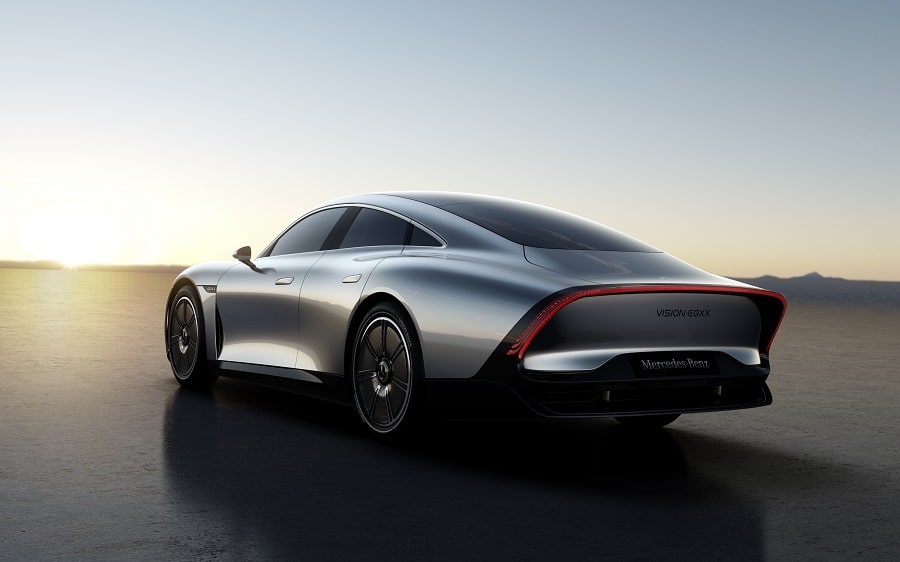
How did they achieve this? Using the experience with energy management software gained in Formula E, and thanks to the research work on friction reduction, new lubricants, temperature management and innovative materials inside the engine. Not for nothing, in fact, the engine is the same as the Mercedes-AMG One, thus deriving from the world of Formula 1.
And inside, the technology is incredible: Mercedes Visioni EQXX has a 47.5-inch screen and cruelty-free and recycled materials
A true Halo car, the car that showcases the latest technologies from the House, is not complete without an interior to match. And indeed Mercedes Vision EQXX flaunts incredible technologies even inside the passenger compartment. Let’s start by saying that the Vision EQXX uses innovative, recycled and completely cruelty-free materials. There are in fact no materials of animal origin, and the seat upholstery consists of bio-set and by a particular coating, called Mylo. This is in effect one Vegan “skin”, which replicates the sensations and texture of the skin by obtaining the material from the roots of mushrooms. Plus, the microfiber is DesertTex, obtained from cacti, while the mats I am in bamboo fiber. The heating then uses a new heat pump, which collects the heat from the electric motor, thus improving efficiency at low temperatures.
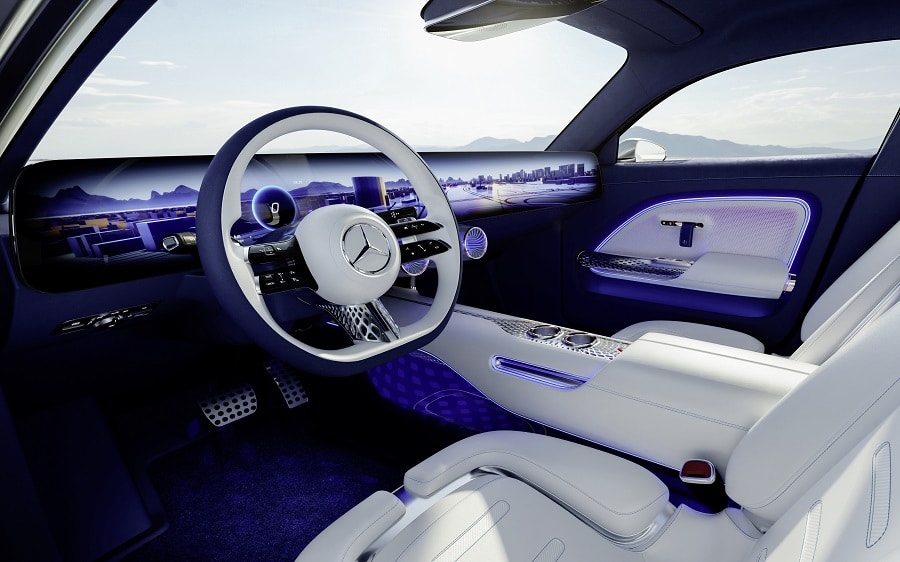
The protagonist of the interiors, however, is certainly thehuge 48.5-inch screen, which evolves what we have seen with Mercedes Hyperscreen. This time, the screen occupies the entire dashboard without interruption, and has a resolution of 8K. The operating system is based on a neural network. The operating system is in fact developed according to the concept of neuromorphing computing. What does it mean? Replicating, in a nutshell, the functioning of the human brain and its structure. This system allows an energy consumption commensurate with the load of calculations and information required, offering incredible performance. The system is developed in collaboration with the Californian company BrainChip, and the goal is to see it soon in a production Mercedes.

Inside the Mercedes Vision EQXX we then find the new virtual assistant, Jelinek. This new assistant also takes care of providing important information to passengers only when they are useful to increase comfort. The navigation is able to offer a zoom of up to 10 meters, 3D images and in real time. There is also a audio system with experience in 4D which however does not focus on power, but on efficiency. Instead of having dozens of speakers, on the EQXX the speakers are few and far between and placed close to the passengers. In this way, the space that the sound waves have to travel is reduced, without reducing the quality at all.
Will we ever see the Mercedes Vision EQXX on the road?
As we have seen, Mercedes Vision EQXX is a car that completely revolutionizes the way we think about an electric car. Despite being a prototype car, in fact, it showed some news that, without a doubt, we will see on the next cars of the Star. Starting from aesthetics, which follows the most classic of “function beyond form” rules. Despite this, the EQXX is very aesthetically pleasing, but it is what lies under the skin that amazes.
Mercedes has responded to all the critics of the electric car, showing how it is really possible to pursue maximum range without monster batteries. Lightness, efficiency and an aerodynamic shape are still central to the automotive world. Mercedes EQXX demonstrates this very well, even if, barring surprises, we will never see it on the road. From this incredible and revolutionary prototype, however, the technologies of the next production electric Mercedes will blossom. And, after this taste, we couldn’t be more curious. If these are the conditions … it will be fun. And you? What do you think? Do you like this crazy prototype of the Star? Let us know in the comments: it’s your time.
…






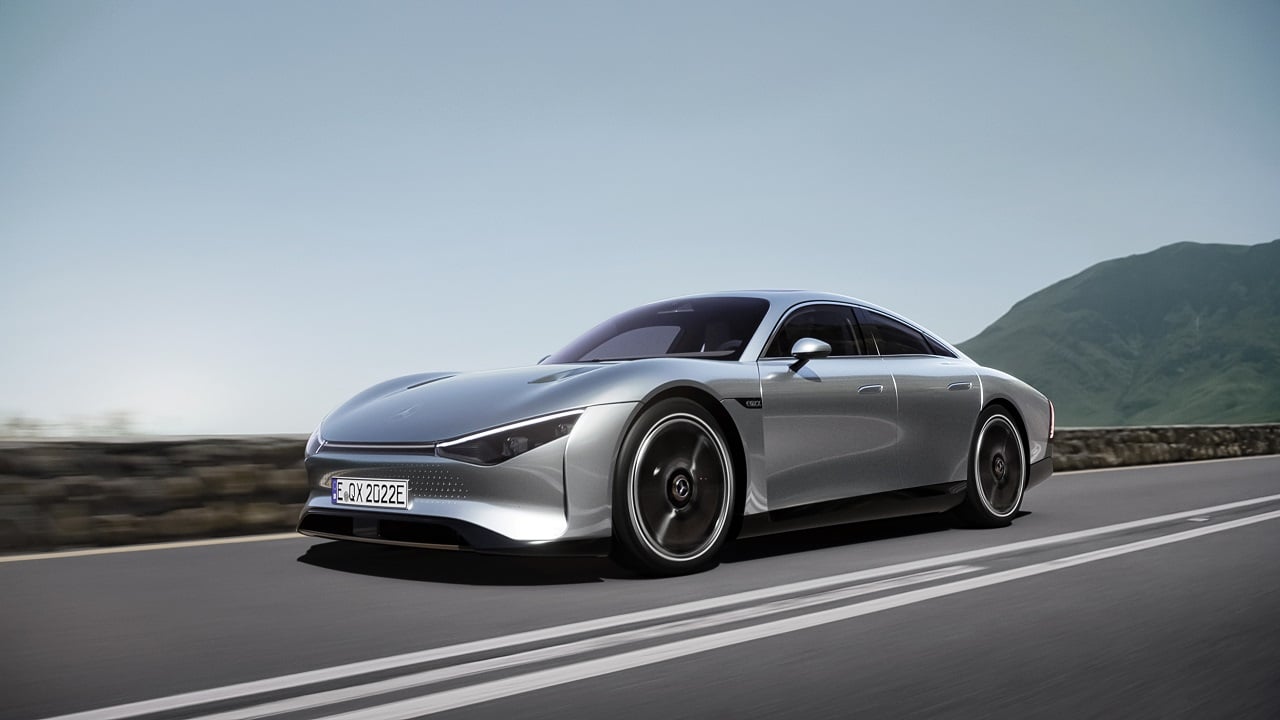



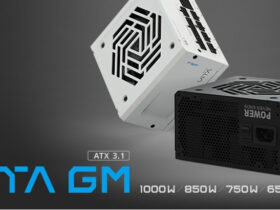

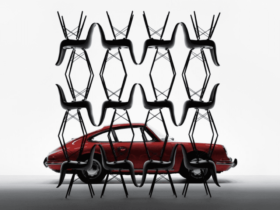

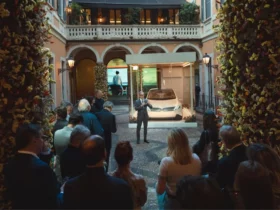
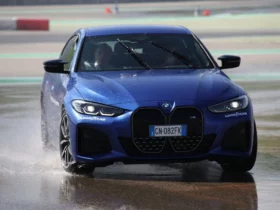
Leave a Reply
View Comments